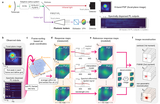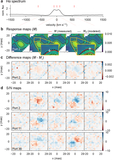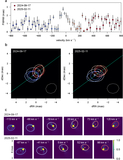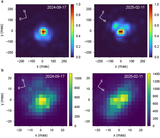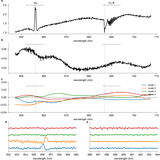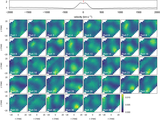Image Details
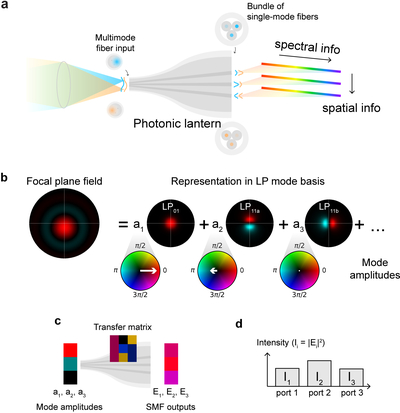
Caption: Figure 1.
The PL-IFU concept. (a) A conceptual diagram of using a PL as a compact IFU. The light collected by the telescope is coupled to the multimode end of the PL at the focal plane, which is then converted into multiple single-mode beams encoding the spatial information of the incoming wave front. Using the spectrally dispersed single-mode outputs, both spectral and spatial information can be recovered at high angular resolution within a small FOV (a few λ/D), enabling detailed characterizations of compact astronomical sources. (b) An illustrative diagram of the spatial mode decomposition of a focal-plane field. Using an LP mode basis that describes the spatial modes of circular step-index optical fibers, a PSF with a small shift is primarily described as a linear combination of the fundamental LP01 and first-order LP11 modes, with complex-valued mode amplitudes. The complex mode amplitudes are represented as phasors (white arrows), where the arrow’s length and angle correspond to the magnitude and phase of the coefficient. (c) A PL has unique complex-valued mixing coefficients (transfer matrix) that map the mode amplitudes to complex amplitudes of SMF outputs; for simplicity, we describe the case of a three-port PL here. (d) By imaging the SMF outputs on a detector, one measures the intensities of the SMF outputs, which have spatial information of the input.
Copyright and Terms & Conditions
© 2025. The Author(s). Published by the American Astronomical Society.


